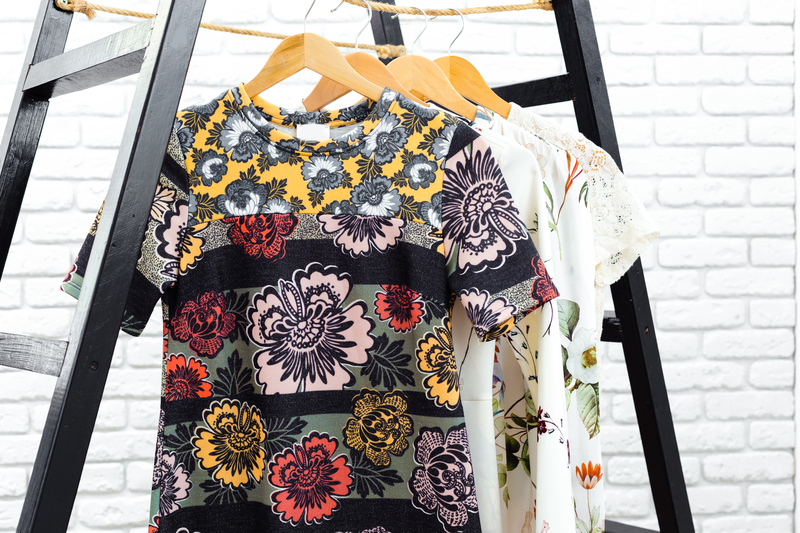Mastering Office Decluttering: A Step-by-Step Guide
Unlock your potential, boost productivity, and foster inspiration with an organized workspace. If you're feeling overwhelmed by clutter in your office space, you're not alone. Mastering office decluttering is a transformative process that not only improves aesthetics but also streamlines your workflow and cultivates a positive environment. In this comprehensive step-by-step guide, discover effective strategies and actionable tips to achieve and maintain a clutter-free office, helping you stay focused and efficient day after day.
Why Decluttering Your Office Matters
A disorganized office can undermine your productivity, creativity, and well-being. Studies show that clutter leads to increased stress levels, hampers decision-making, and makes it difficult to locate essential items. By learning to declutter your office efficiently, you empower yourself to:
- Reduce distractions and maintain focus
- Reclaim valuable workspace
- Enhance your mental clarity and motivation
- Create a professional impression for clients and colleagues
- Improve efficiency by finding files and tools quickly

Step 1: Prepare for Your Decluttering Journey
Set Clear Goals
Before beginning your office decluttering, it's vital to outline your objectives. Are you looking to create a minimalist workspace, optimize storage, or simply tidy up? Write down your goals and visualize the ideal setup. Setting specific, achievable targets helps you remain motivated and organized throughout the process.
Assemble Decluttering Supplies
Gather essential supplies, such as boxes for sorting, trash bags, cleaning products, labels, markers, and filing folders. This preparation will make your office organization project more efficient and prevent unnecessary interruptions.
Schedule Time for Decluttering
Dedicate a block of uninterrupted time for your office clean-up. Whether you declutter all at once or work in segments, scheduling ensures you make steady progress without feeling rushed or overwhelmed.
Step 2: Sort and Categorize Office Items
Empty and Assess Entire Workspace
Begin by removing everything from your desk, drawers, shelves, and storage units. This may seem daunting, but emptying your workspace allows you to clearly assess what you own and identify areas of clutter.
Sort Into Categories
Separate items into clear categories for easier decision-making:
- Keep—Essentials used frequently
- Donate—Items in good condition but no longer needed
- Recycle—Papers, electronics, and plastics that can be recycled
- Trash—Broken or unusable items
Purge Ruthlessly
Be discerning. If you haven't used an item in 6-12 months and it doesn't serve a specific function, it's time to let it go. This applies equally to outdated paperwork, obsolete electronics, dried-up pens, and miscellaneous office knick-knacks.
Step 3: Organize Paperwork and Digital Files
Tame the Paper Monster
Paper clutter is a common culprit in office disorganization. Sort your paperwork methodically:
- Shred sensitive documents you no longer need.
- Scan important papers to digitize and minimize physical files.
- Implement labeled folders for documents you must retain, such as tax forms, contracts, and reference materials.
Streamline Digital Clutter
Office decluttering isn't confined to your physical workspace. Declutter your computer desktop, inbox, and cloud storage for a truly organized office environment. Delete unnecessary files, create clearly labeled folders, and use productivity tools to keep digital workspaces streamlined.
Step 4: Optimize Storage Solutions
Smart Storage for a Neat Office
With fewer possessions, it's easier to devise effective storage systems. Consider these ideas:
- Drawer organizers for pens, office supplies, and small items
- Shelves and cabinets for books and binders
- Stackable trays for incoming and outgoing paperwork
- Labelled boxes for archived materials
- Wall-mounted storage to free up desk space
Utilize Vertical Space
Install shelves, hooks, or pegboards to keep frequently used items handy yet off your primary work surfaces. This enhances accessibility and maintains a tidy, uncluttered desk.
Step 5: Reassemble and Personalize Your Workspace
Arrange With Purpose
Return only essentials to your workspace, placing items based on frequency of use. Frequently used tools and supplies should be within arm's reach, while less-used items can be stored away.
Create an Inspiring Work Environment
Personal touches add warmth and motivation to your workspace. Choose a few meaningful objects—like a family photo, a plant, or an inspirational quote—but resist the urge to over-decorate. The goal is to maintain minimalism with personality.
Step 6: Develop Daily and Weekly Maintenance Habits
Adopt the "One In, One Out" Rule
Whenever you bring a new item into your office, remove an old one. This simple rule prevents clutter from re-accumulating over time.
Daily Decluttering Practices
- Clear your desk at the end of each day
- File away papers and documents immediately
- Return tools and supplies to their designated places
Weekly Office Reset
Dedicate a few minutes each week to tidy your space, clean surfaces, and review what you've accumulated. Regular maintenance is key to mastering office organization in the long term.
Proven Decluttering Tips From Professionals
- Go paperless with cloud storage and e-signature tools
- Set up zones for tasks, e.g., work zone, reference zone, and supply station
- Keep only what you love and use
- Invest in ergonomic furniture to improve comfort and minimize clutter
- Utilize checklists to keep track of tasks and items
Common Office Decluttering Challenges and Solutions
Sentimental Attachments
It's difficult to part with items that hold emotional value but serve little functional purpose. Select a small box for keepsakes and limit yourself to items that truly inspire or hold significant meaning.
Shared Spaces
If you share your office, communicate your decluttering goals and coordinate efforts. Set common guidelines for organization and label shared storage areas for clarity.
Lack of Time
If time is a constraint, break your office decluttering project into manageable 10-15 minute sessions throughout the week. Progress, no matter how small, adds up over time.
The Psychological Benefits of Decluttering Your Office
A tidy workspace impacts more than just your workflow. Decluttering your office alleviates stress, elevates mood, and fosters a sense of accomplishment. As your environment transforms, you may notice improved concentration, heightened creativity, and renewed enthusiasm for your work.

Technology Tools to Support Office Organization
- Task management apps to keep your workflow organized
- Digital calendar systems to declutter your schedule
- Document scanning tools for reducing paper
- Cloud storage platforms for file access anywhere
Take advantage of these tools to further minimize physical clutter and streamline your processes.
Conclusion: Make Office Decluttering a Lifestyle
Mastering office decluttering is an ongoing journey. By following this step-by-step guide, you'll set the foundation for a productive, inspiring, and organized workspace. The real key is consistency: maintain daily and weekly habits, adapt your systems as your needs evolve, and resist the temptation to accumulate unnecessary items.
An organized office isn't just about aesthetics—it's a strategic advantage. By embracing office organization techniques and prioritizing regular decluttering, you'll enjoy greater clarity, increased efficiency, and a renewed passion for your professional pursuits. Start today, and turn your office into a powerhouse of productivity!